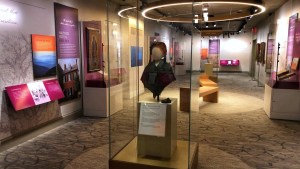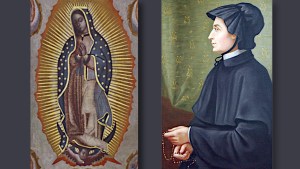The Battle of Gettysburg, fought July 1–3, 1863, was a key turning point in the American Civil War. When General Robert E. Lee, commander of Confederate forces, led his Army of Northern Virginia into Pennsylvania, his goal was straightforward. Lee needed to win one decisive victory in the north. He believed that this would dishearten the Union, forcing President Abraham Lincoln to seek a negotiated peace with the Confederacy.
Lee’s campaign was doomed to fail, but no one knew that on July 1, 1863 – and certainly not the men of the 148th Pennsylvania Volunteer Infantry Regiment, part of the Army of the Potomac fighting for the Union. They were still in Maryland, making a hard march toward Pennsylvania when the fighting broke out. The men of the 148th must have been full of emotion as they approached their home state.
(View the PHOTO GALLERY at the end of the article to learn more about this story.)
Jeremiah Z. Brown and the 148th
Among those soldiers was my great great-granduncle, First Sgt. Jeremiah Zachariah Brown. Brown had been in his first year of study at Allegheny College in Pennsylvania when he enlisted in the newly forming 148th. Two months prior to Gettysburg, he and his regiment had seen their first major action at the Battle of Chancellorsville (May 1-5, 1863). They suffered serious losses in the battle but were commended for their valor and fierce sense of discipline. Those qualities would soon be put to a harrowing test.
As they approached Taneytown, Maryland, Sgt. Brown and his comrades could hear canon fire about 10 miles to the north. The battle in Gettysburg was beginning to heat up. It was 11 a.m.
A peaceful spot to establish a community
Nine miles to the east of the 148th, in Emmitsburg, Maryland, the sounds of battle could also be distinctly heard, including on the property of the Daughters of Charity.
It is an extraordinary coincidence (or act of Providence) that the first American-born saint founded her religious community just 12 miles from the site of the Civil War’s most critical battle. “St. Joseph’s Valley,” as Mother Seton called it, had been gifted to her by a wealthy seminarian. Mother Seton immediately recognized that this was the perfect location for her congregation to establish roots and begin serving the children of the poor.
There was room to grow in St. Joseph’s Valley, and unlike New York City where she had lived for most of her life, this stretch of land was quiet and peaceful.
In the summer of 1863, that tranquility ended when close to 10,000 Union soldiers arrived on the grounds and set up a temporary camp. Years later, one of the Daughters, Sister Camila O’Keefe, recalled the army’s arrival:
“About 4 o’clock in the afternoon came the troops, some on horseback, making their way up the road from the barn, some up the road from the hill, until the grounds around were actually covered with soldiers. Father (James Francis) Burlando was on the place to meet the Generals. All seemed very kindly disposed, assured Father that the Community should not be in the least molested, that the grounds should be fully guarded and Emmitsburg be under Martial Law whilst necessary.”
Her words are preserved in a remarkable book, Balm of Hope by Sister Betty Ann McNeil. It is a history of the nursing mission of the Daughters of Charity during the Civil War, drawing upon letters and memoirs left of the sisters who cared for the wounded and dying. I turned to the book extensively for this article, along with an interview with Lisa Donahue, the Seton Shrine’s Research and Exhibition Coordinator.
There were between 8,000 to 10,000 troops encamped in the Valley of St. Joseph in the days leading up to Gettysburg. The sisters did their best to give them a decent meal, though at least one of the sisters was anxious they were running out of food:
So she ran over to the bake house to see what bread might be there and to her great surprise found they had all the baking of that day on hand. She could hardly believe her eyes and thought the bread must have multiplied. Well the poor men got a good supply of bread and butter, cold meats as far as it went, with good coffee. It was a pleasure for the Sisters to be able to satisfy the hunger of so many, and oh, with what expressions of thanks did they not receive the meal from the hands of the Sisters.”
For many of these soldiers it would be their last meal.
Hell in the Wheatfield
There have been hundreds of books and numerous documentaries about Gettysburg. To convey some sense of the intensity the slaughter, it is enough to follow the 148th into battle. The 19-acre patch of farmland that they defended on July 2 has come to be known as the Wheatfield. It stood about a thousand feet from the road that led to Emmitsburg.
The 148th fought beside the famous Irish Brigade, who were addressed by their chaplain Fr. William Corby before the fighting began. The priest also gave them general absolution. A sign on the present-day battlefield memorializes the event, quoting an officer who was present:
“I do not think there was a man in the brigade who did not offer up a heartfelt prayer. For some it was their last…”
It was around 6:00 pm when 1st Sergeant Brown and the rest of the 148th were ordered to advance across the Wheatfield, before a hail of Confederate bullets. Colonel Edward E. Cross, their brigade commander, was mortally wounded during the fight. Highly eccentric, Cross wore a bandana on his head rather than an officer’s hat. On July 2, he chose to wear a black bandana because he had had a premonition that he would die.
In his narrative history, The Civil War, Shelby Foote describes the scene:
“… the fighting degenerated into a bloody squabble as regiment fought regiment, alternately driving and being driven. ‘What hell is there down in that valley!’ a Federal lieutenant exclaimed after viewing the carnage…”
Somehow the 148th made it to a stone wall while under savage fire, holding their ground until, low on ammunition, they were finally relieved near sunset. In a later account, Jeremiah Brown recalled that his own company was fortunate because on their part of the line “the enemy bullets went over our heads.”
By the end of the engagement, nearly 6,000 soldiers on both sides had been killed or wounded in that one small field. It is estimated that there were approximately 51,000 total casualties when the Battle of Gettysburg finally ended the following day.
In St. Joseph’s Valley
The Daughters of Charity must have noticed that the sounds of battle had mainly ceased by July 4. They had no idea which side had won, however. Two days later they found out, as Sister Camilla wrote:
“On Sunday morning the 5th July, some poor struggling Confederates came down [to St. Joseph’s]. How they cleared themselves was a wonder, for if the poor fellows were caught they would be prisoners. They got a good warm breakfast here after which they set out for what place they did not say (…) Father Burlando and Mother decided that some Sisters had better go up to Gettysburg, so (the) omnibus was gotten ready and baskets of things for the wounded, bandages and other necessaries. Father Burlando got the carriage, taking two Sisters with him, fourteen were in the omnibus and off they started.”
Lee’s gamble had failed. He and his army retreated south. There would be many skirmishes in the coming days, but for the Union and Confederate soldiers the most intense fighting was over for the present. For the Daughters of Charity, however, their battle against disease, trauma, and despair was about to begin…
The story of the Daughters of Charity at Gettysburg will continue in part two of this article.





